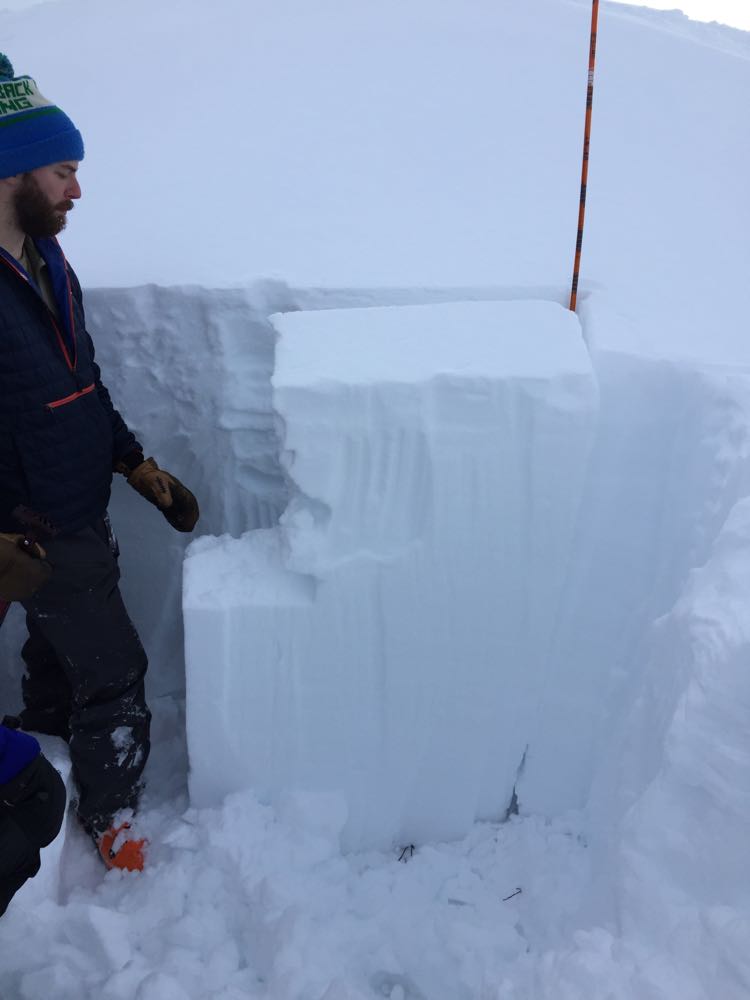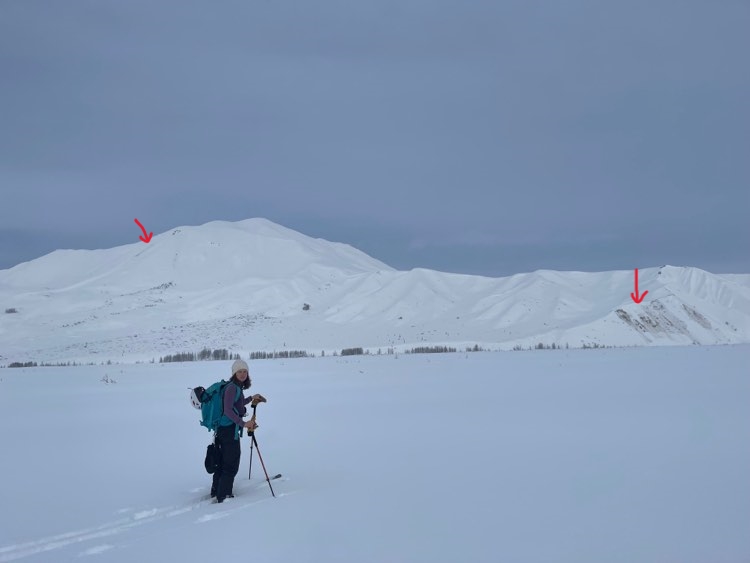Detailed Observation
| Date | 2022-02-19 |
| Location | Eastern Alaska Range |
| Observer | Kelsey Stockert |
| Avalanche | N |
General Observations
Ski toured from Richardson Monument towards Gulkhana Glacier, intending to maybe ski the first mountain after phelan creek. When we were still in the flats just past Isabell Knoll, we felt and heard a loud whumph. At this time, we saw “Avalanche 1” release (map attached below), which was about 0.5 miles away from us. We took a couple more steps, heard another whumph, then watched “Avalanche 2” release, which was harder to estimate it’s precise location on a map, but was approximately a 1.5 miles away with at least a 0.5 mile long run path. We turned around at this point, uncomfortable with the snow stability. We then noticed a smaller third avalanche 0.5 miles away. We did not witness this avalanche but we do not remember seeing it beforehand, so it was possibly also triggered with the two that were witnessed. In either regard, this third avalanche was recent, as there was snowfall the day prior and the path lacked new snow.
This makes 3 avalanches on very different aspects: south, southwest, and northeast. The first avalanche clearly slid on the ground surface, exposing bare earth. It appeared the start zone of the second avalanche was also bare earth, but it was further away and more difficult to say for certain. We assumed a depth hoar avalanche problem at this point.
We decided to stay off angles greater than 30 degrees at this point. We skinned up a gentle slope toward Isabel Knoll and dug a pit on a 15 degree northwest slope. Snowpack was 160cm deep and right side up until the 25cm of well developed facets at the ground. Our shovel shear and CT tests produced poor quality fractures between 115-125cm from the base (STM125cm, CT22Q3@125cm, CT29Q3@115cm) and ECTX. One observation during the CT test was that the entire column was shaking on the facets. The ECT block was very cohesive slid as a unit across the facets.
Uploaded Images




